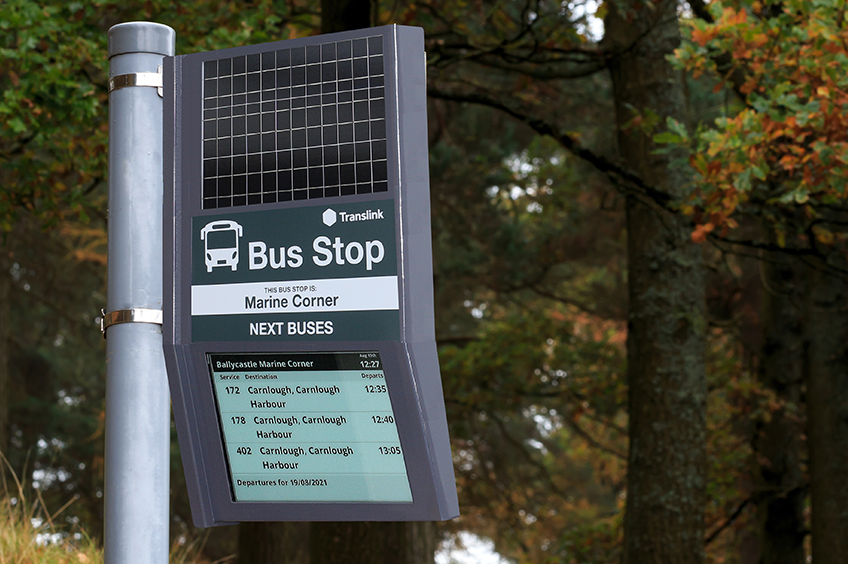The signs are powered by batteries, or a combination of batteries and solar cells. They can operate for between three to seven years, depending on the model, before any maintenance is necessary.
The ultra-low-power displays will give passengers detailed journey information, showing both real time and scheduled data alongside emergency messages. In order to keep power consumption to an absolute minimum they employ revolutionary e-paper technology. Unlike LCD or LED signs, the new signs don't use power all the time, just when information is updated.
The new displays are also much greener in their construction. Plus when it reaches the end of its working life, the solar-powered model is almost entirely recyclable.
They can be quickly installed on any existing pole, so they're a great way to deliver real time
passenger information in rural or underserved areas at minimum cost and high sustainability.
The signs connect seamlessly to 21st Century’s EPI content management system, the RTPI and
CMS solution of choice for many of UK’s top local transport authorities.
Russ Singleton, who is the CEO of Journeo plc, said: “There is a genuine, strong demand
for transport networks to ensure all communities access real time passenger information, no matter what their location might be.
"In fact, the National Bus Strategy for England identifies the provision of bus stop information as key to giving passengers and potential bus users the confidence to choose to use public transport repeatedly.”
He went on to say: “Of course, we're very proud of these new displays, as they provide local transport authorities a means to offer accurate travel information whilst at the same time reducing their environmental impact. There isn’t anything else available to local transport authorities that provides these levels of flexibility and also sustainability, and we see a great future for these solutions.”
